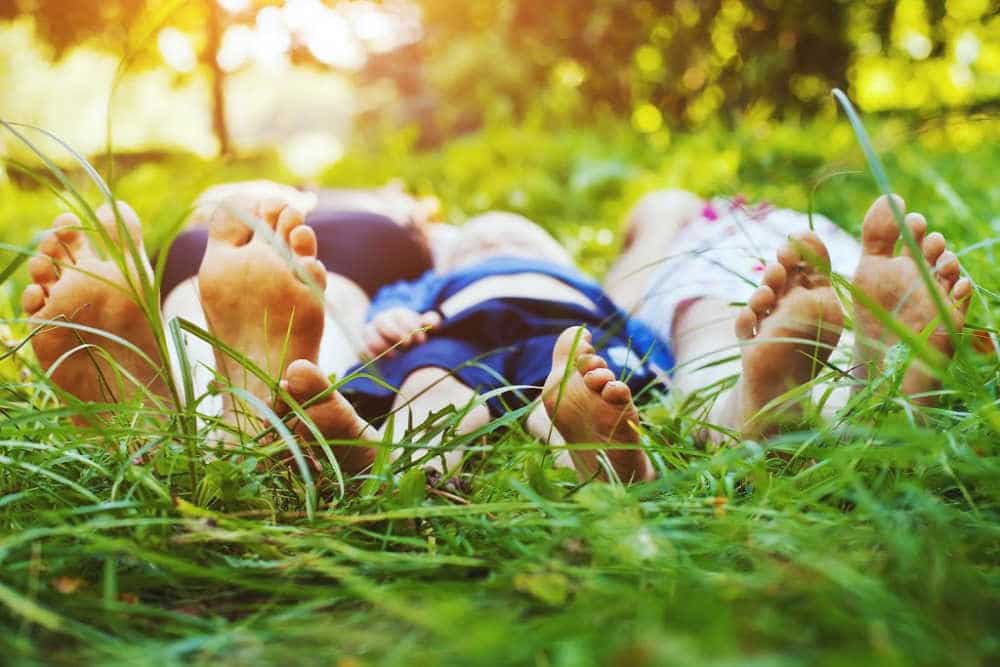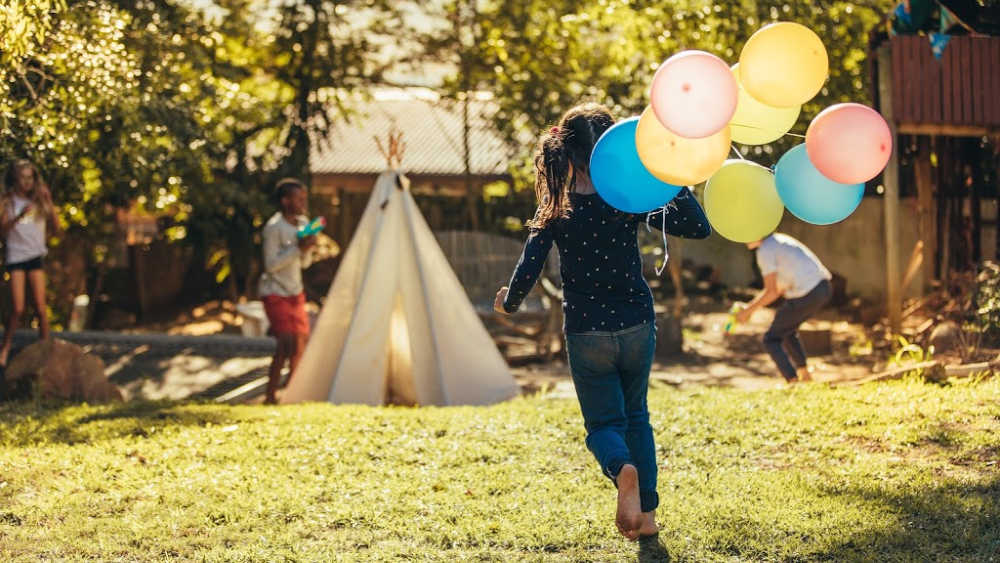When it comes to summer activities for kids, you don’t need to plan or spend too much. In…
When it comes to summer activities for kids, you don’t need to plan or spend too much. In fact, the way to give your child the best summer possible is incredibly simple. Find out how below.
One of the highlights of my summers growing up were back-to-back sleepovers with my best friend, Meghan.
Her parents are my Godparents and my parents are hers. And so there were times that we were allowed to alternate nights sleeping at her house and mine. We woke up and spent our days pretending her parents’ abandoned barn housed our imaginary horses, nursing a hurt robin back to life, or wading through the murky pond behind my parents’ house in search of frogs.
At night, we would lay down in my brother’s bunkbeds or her games-room. Then, we counted the seconds between the sound of thunder and the strike of lightning or got in trouble for playing Sonic the Hedgehog when we should have been sleeping.
Those days and nights blurred into one each other. There was no schedule and therefore no way to keep time. Summer seemed to go on forever and it was the best.
Instead of the days seeming endless, I am ever-aware of the finite nature of my children’s childhoods. Whenever I see the article, 18 Summers: It’s All We Get, it makes my heart skip a beat because the truth is that I don’t exactly have 18 summers.
With a 7, 6, and 2-year-old, I only have 11, 10, and 16 summers left. And, in truth, as they get into their teenagehood, my time with them will become fewer and further between.
All I want to do is cling to my children’s childhood for dear life and soak in as many memories with them as possible.
The type of summer Meghan and I shared is now rare. Instead of engaging in elaborate imaginative play, spending time in nature, and enjoying days that are undefined, many children spend summertime overscheduled in too many extracurricular activities or in camps and in front of screens for far too long.
Instead of allowing children to develop in the way that nature intended them to, largely through free play, we expect them to live in adult-like schedules and learn in adult-like ways.
For the immature human brain, we are asking far too much (1). – Alana Pace
Case and point, family therapist, Kim John Payne found that children in his practice were overscheduled and overstimulated. He found it was to the point that the patients he saw were exhibiting comparable stress levels to children in wartorn countries. Though they are physically safe, mentally speaking they aren’t. Payne observed western children showed compounding stress. The more children spend time in front of screens, in extracurricular activities, and overrun by toys, the more they feel overwhelmed. And, as stress levels climb, children then are more likely to experience symptoms of anxiety, depression, and other disorders.
Related reading: There is an undeclared war on childhood. This is how we stop it.
Metanalyses of mental illness among young people show that the youth of today are 500% more likely to experience depression, anxiety, paranoia or psychosis than previous generations (2). The most drastic increase has been from the 1990s until the present. Researchers feel this is largely due to a disproportionate focus on individualism. Notably, the more youth are focused on personal achievement and the appearance of perfection, the more likely they are to experience mood disorders (4).
Adding to this mental illness epidemic is a lack of outdoor play.
Active outdoor play is positively associated with better behaviour and mental health (5). Sadly, our children are spending less time outside than we did. A study conducted by National Trust found that children our generation spent an average of eight hours a week outside while our children spend about four (6). In turn, a study by Seattle Children’s Research Institute found that only 40 percent of mothers and 24 percent of fathers took their children outside each day (7). And approximately half of the children weren’t going outside regularly at all.
Here are 3 golden rules to combat these negative influences and giving our kids the best summer ever.
Below are several summer activities for kids that elaborate on these three guiding principles to give children the best summer ever.

In order to give your child the best summer ever, you will want to get present often. In order to do this, you will need to unplug from your phone and work commitments as often as possible. Say no to extra activities or anything that unnecessarily imposes a schedule on yours and your children’s lives.
Some of the greatest predictors of success are resilience and ability to problem-solve. Over-protected and over-managed children tend to have poorer confidence and feel overwhelmed more easily. However, children who are given chances to feel competent on their own and have age-appropriate responsibility do better in life (8).
Free-play is the antidote to so many problems are children are facing today. And creative or pretend play are great ways to also promote problem-solving, encourage imagination, and encourage inventiveness.
I always preface these activities by informing my kids that they can be creative as they would like. However, they must clean up everything once they are done (or my answer won’t be yes the next time they want to do something like this).

As my son’s birthday, and the end of the school year, approached this year, everything in me told me to organize, to create Pinterest-worthy games and plan out a picture perfect craft for each of the boys to take home. But with the memory of Meghan’s and my summers impressed upon me, I held back. I texted all of the parents who had RSVPed and said, “We will spend the whole party in our backyard. Please make sure the kids are dressed for the weather.”
My son’s birthday came and I looked at the party setup. I felt like it was alarmingly bear by my standards.
I called out to my two big kids to pull out the soccer net, some balls and any other outdoor stuff they wanted to play with. As the parents came to drop off their kids, I resisted the urge to apologize for my lack of orchestration. To my surprise, the parents seemed impressed.
My nervousness that the boys and girls would get bored dissipated as the children ran, squealed, and played. The party’s scheduled end came, but the parents returned seeing how well everyone was playing, they stayed for hours afterwards. Everything felt connected as the adults chatted and the children slowly opened and played with my son’s gifts.
It was one of the first times in ages that I felt like time went on longer than usual. And it was in the best way possible.
More great articles like these:
What to do outside on a rainy day with kids
There is an undeclared war on childhood. This is how we stop it.
50 Ways to Play: Your Family’s Ultimate Summer Bucketlist
Extracurricular activities for kids: Scientists say this is the best approach.
Why children benefit from more outdoor play.
Simple Olympic Activities for Preschoolers
Make your kiddie pool awesome with these sensory play ideas.
Being a teenager is like standing on a bridge between childhood and adulthood. It’s exhilarating, confusing, lonely, and…
You know, growing up isn’t a cakewalk. We all face those bumps and hitches that shape us into…
Ever caught yourself nudging a rogue pea back into its lane, even though you’re decades past the kids’…